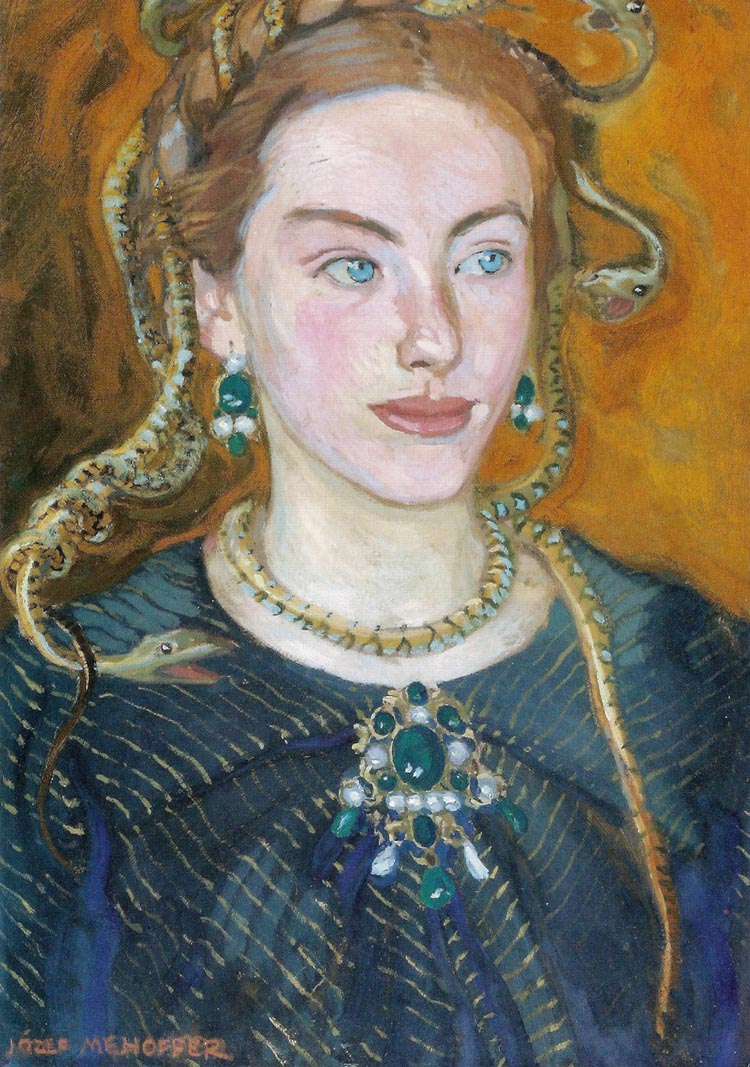
European and American art of the19th and early 20th centuries responded to the birth of the New Woman and the beginning of the feminist movement by categorizing women into two opposite types. They were presented either as blood-thirsty creatures from Greek mythology, as Salome obsessed with the decapitation of a lover, as poison flowers and vamps or as personifications of love and virtue, household angels, or noble virgins dying out of self-sacrifice. The literature and later, cinema, supported this dichotomy.
The lecture “Femmes Fatales figures in late 19th and early 20th century Western art” will analyze the turn of the century paintings dealing with the subjects of dangerous females bringing destruction to the male world. It will study images inspired by the Bible (of Eve, Salome, Judith, and Delilah) and by Greek mythology (of Pandora, the Sphinx, Harpies, Medusa, Circe, sirens, and others). It will show how the original sources of inspiration were gradually forgotten for the sake of more abstract representations of death-bringing femmes fatales.
Among the artists discussed will be Edvard Munch, Gustave Moreau, Daniel Gabriel Rossetti, Franz von Stuck and Bruno Schulz. The list of writers mentioned will include Charles Baudelaire, Prosper Merimée, Emile Zola, Oscar Wilde and Leopold von Sacher-Masoch.
The talk will also cover the topic of early Hollywood “vamps” personified by such stars as Theda Bara, Greta Garbo, Marlene Dietrich or Louise Brooks. We will see clips from films with suggestive titles such as “A Fool There Was,” “Flesh and the Devil” or “The Devil is a Woman”, and will discuss the parallels between painted heroines and their silver screen daughters.
The ultimate question the talk will raise is whether we can still find traces of the dichotomy between blessed and cursed women in contemporary culture.
About the Speaker
Agnieszka Taborska is a writer and art historian. Her main areas of interest are French Surrealism and the image of women in fin de siècle Western art and literature. She is the author of 13 books published in Poland, the US, France, Germany, Japan, and Korea. Among her most well-known titles are Conspirators of Imagination: Surrealism, the novels The Dreaming Life of Leonora de la Cruz (Midmarch Arts Press, 2007), The Unfinished Life of Phoebe Hicks, and two collections of short stories, Whale or Objective Chance and Not as in Paradise. She has curated exhibitions of Surrealist art in France and Poland and written scripts for documentary films related to Surrealism. Her works of fiction have received literary prizes in Germany, have been adapted for the stage and brought to the screen in the form of award-winning animated films at international film festivals. She divides her time between Warsaw, Poland and Providence, RI where she teaches art history at the Rhode Island School of Design.